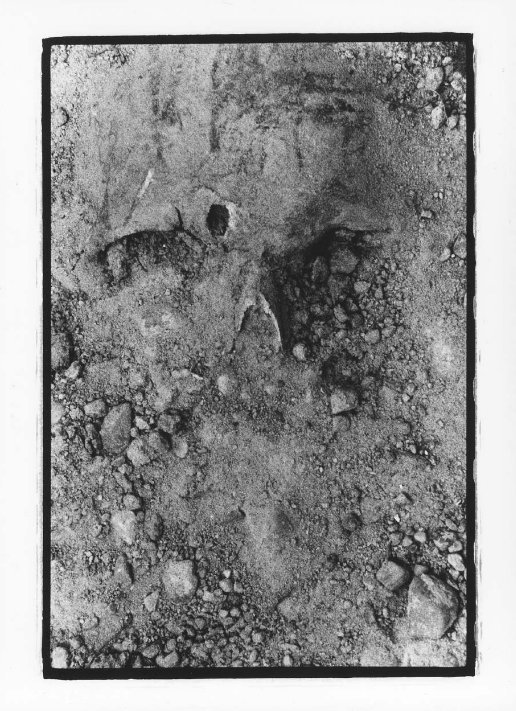8/5/2009
Francesc Torres
Artium, Vitoria-Gasteiz
Dark Is The Room Where We Sleep

Two large installations by this Catalonian artist delve into consciousness and collective memory of events
that have taken place both in the past and in our own times.
ARTIUM, Basque Centre-Museum of Contemporary Art, presents the exhibition Dark Is The Room Where We Sleep,
by Francesc Torres (North Gallery, until September 20), two large installations by this Catalonian artist whose oeuvre
has been linked for decades with the exploration of collective consciousness concerning events that have changed
the history and lives of people. Thus, while the work that has provided the title for the exhibition deals with an
examination of the Spanish Civil War, based on the exhumation of a common grave in the village in Burgos,
Memorial was created in 1992, just one year after the first Gulf War. This work has formed part of the ARTIUM
collection since 2006, when it was left on deposit by the artist. Dark Is The Room Where We Sleep is a production of
ARTIUM with the cooperation of Vitoria-Gasteiz Town Hall and Ministry of Culture.
"Whilst doing only what is possible is healthy and reasonable, it is also dreary, and life is short anyway. Maybe for these
reasons I am determined to win the Spanish Civil War". These words were uttered by the Catalonian artist Francesc Torres
(Barcelona, 1948), talking about his installation Dark Is The Room Where We Sleep, which has provided the title for the
exhibition presented at ARTIUM. He went on to explain what he meant by his statement. Winning the war "consists, no more
and no less," he declares, "of preventing people from mistaking those who are in the right historically for those who are not. It
involves never putting the innocent and the tyrants in the same basket. It consists of recovering the victims of a sinister regime
so that everyone may know that they were indeed the victims and, once the fire is out, abandon weapons."
The installation in question is the result of the excavation of a common grave in the village of Villamayor de los Montes in
Burgos. There, on September 24, 1936, 46 men, the youngest being 18 years of age, and the oldest 61, were executed and
buried by militants of the Falangist party. Almost 70 years later, several inhabitants of the village asked the Association for the
Recovery of Historical Memory to help them excavate, recover and identify the bodies of their fathers and grandfathers. Torres
documents the entire process so that "these images, both mine and those of others, might form part of the visual
consciousness of the citizens of Spain".
The installation consists of 29 photographs taken at different times during the excavation, and an old clock "which, after being
buried, possibly went on indicating "negated time" until it wound down completely". The members of the team and relatives of
the victims take part of this kind of visual diary which records how the remains were returned to the family and the hopeful,
touching burial in the village cemetery, following decades of pain. The work was presented initially at the International Centre
for Photography (www.icp.org), the actual owner of the work, and has formed part of the recent retrospective dedicated to
Francesc Torres at the MACBA.
The work that opens the exhibition is Memorial, an installation dating from 1992, which, once again, deals mainly with the
victims of war, in this case those of the first Gulf War. The space, which might be the living room of a home, seems to be
occupied by several rifles stuck into the floor, as a tribute to the memory of those who fell in battle. Instead of helmets, the
butts of the rifles are adorned with the hats of civilians. The ceremonial flame is, on this occasion, the burning Kuwaiti oil well
that was depicted in the media around the world at that time. That war, which was said to be the first conflict to be shown live
on television, invaded the homes and living rooms of people living in the West and the surfeit of images anaesthetised them
against the suffering of the victims. Memorial has formed part of the ARTIUM collection since 2006, when it was left on deposit
by the artist.
Francesc Torres, a pioneer of the installation as an art form in Spain, has lived successively in Barcelona, Paris, Chicago, New
York, Berlin, New York and once again, since 2002, in Barcelona. He has always attached special importance to historical
memory. His work can be found in some of the most prestigious collections, such as the MOMA, the Whitney Museum in New
York,, the Smithsonian Museum in Washington, the Reina Sofía in Madrid, the MOCA in Los Angeles and the Contemporary Art
Museum of San Diego. ARTIUM has another work by Torres, entitled Occident (1991). The artist also took part in exhibition
Laocoon devoured. Art and Political Violence, shown at ARTIUM in 2004, with the work entitled La furia de los santos.
Produced by ARTIUM (Vitoria-Gasteiz), with the collaboration of Vitoria-Gasteiz Town Hall and Ministry of Culture.
Activities:
Talk by Francesc Torres, Friday May 8, 7 PM.
Film season El balcón abierto. Documentos para la posguerra,
from May 22 to June 7; a selection by Pablo Llorca.
Debates on the Obscurity of memory, May 26 and 27.
Image: Dark Is tHe Room Where We Sleep (photograph from the installation) Francesc Torres, 2006
Press contact:
Anton Bilbao Tel: 945-209023 abilbao@artium.org
ARTIUM
Basque Centre-Museum of Contemporary Art
C/ Francia, nº 24 01002 Vitoria-Gasteiz
From Tuesday to Sunday: from 11 AM to 8 PM, without interruption
Mondays: closed (unless this coincides with a public holiday)



